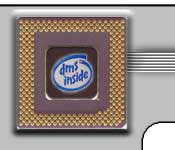|
System-on-Chip Circuit Architecture for Eliminating Interferents
in Surface Plasmon Resonance Sensing Systems
M.W. Johnston, Lisa E. Hansen, and Denise Wilson

This paper presents a system-on-chip circuit architecture that enables the extraction of concentration information directly from a surface
plasmon resonance (SPR) probe, independent of ambient fluctuations in the reference medium, temperature, and background light.
Compensation for these baseline (bulk) interferences is embedded into the baseline integration state of the photodetectors in the optical
path, creating a flatline for the baseline (no analyte present/bulk refractive index) condition and the characteristic SPR dips for the
measurement (analyte present) condition. A resolution of 2 X 10-4 refractive index units is possible with this system, comparable to the
5 X 10-4 RI unit resolution of conventional signal processing (software-based) approaches to processing the same data using a similar
framework. This approach demonstrates experimentally the capability of the dip-based SPR probe in a portable footprint for detecting
refractive index at resolution levels suitable for practical applications of these probes to field environments.
|



